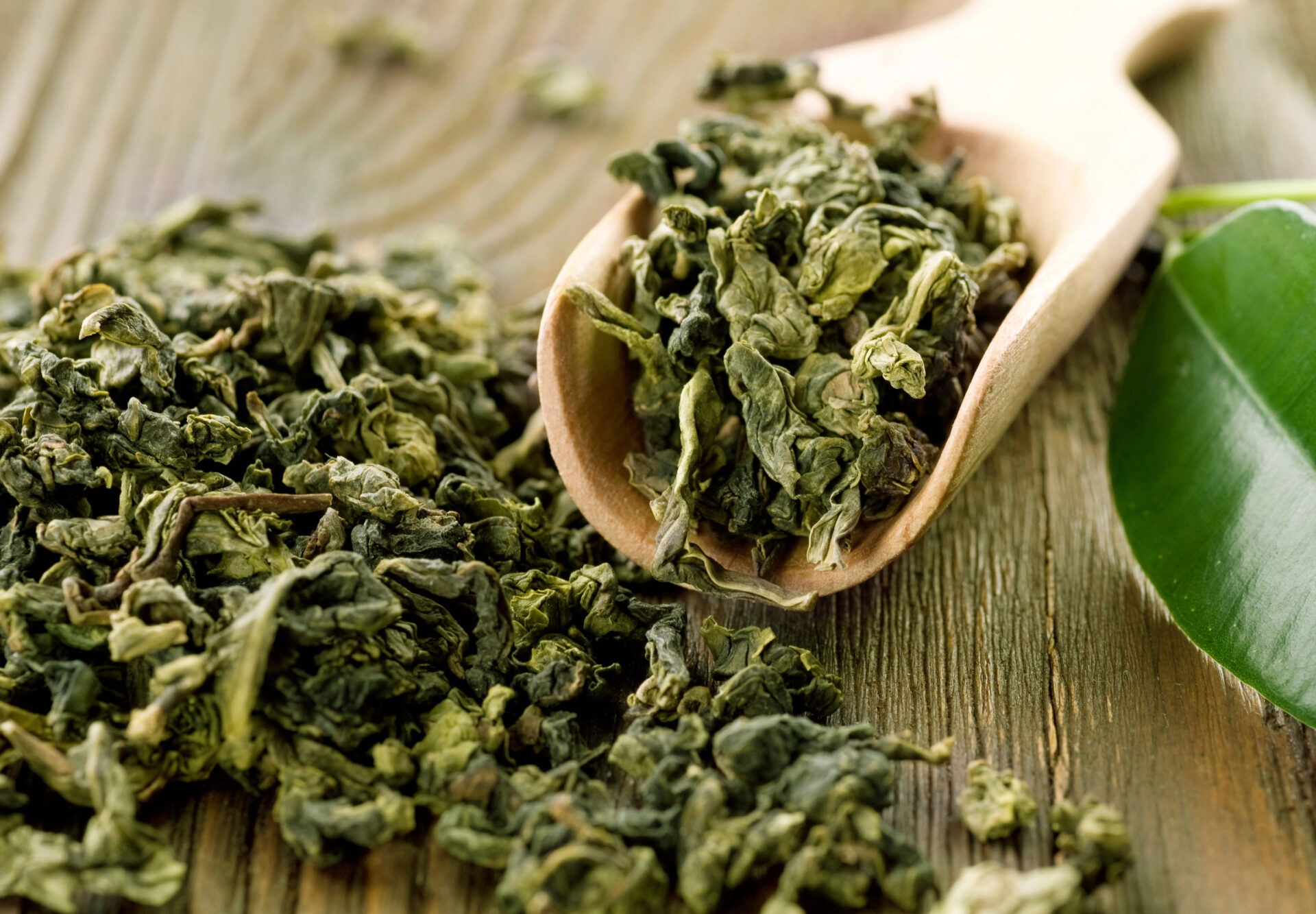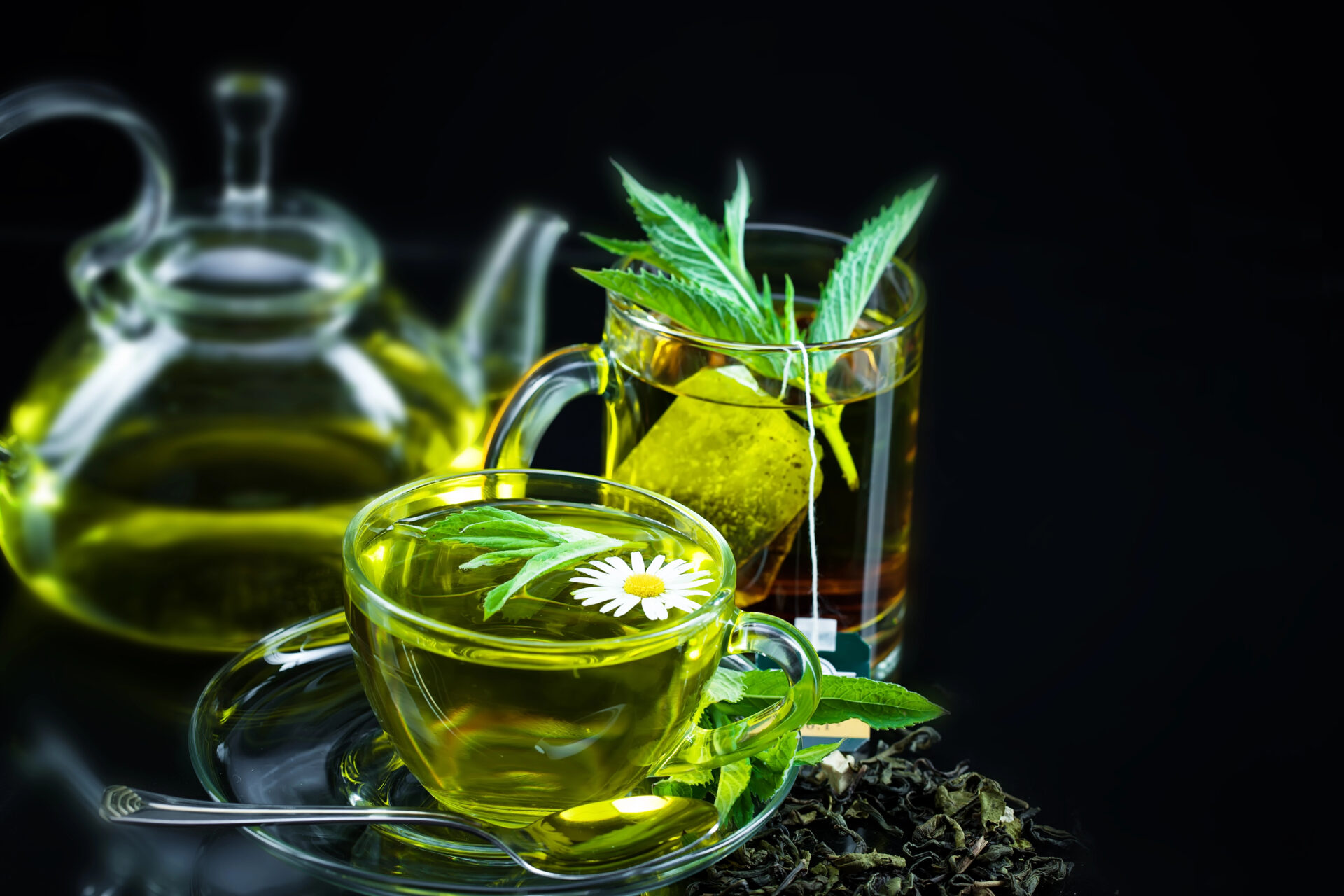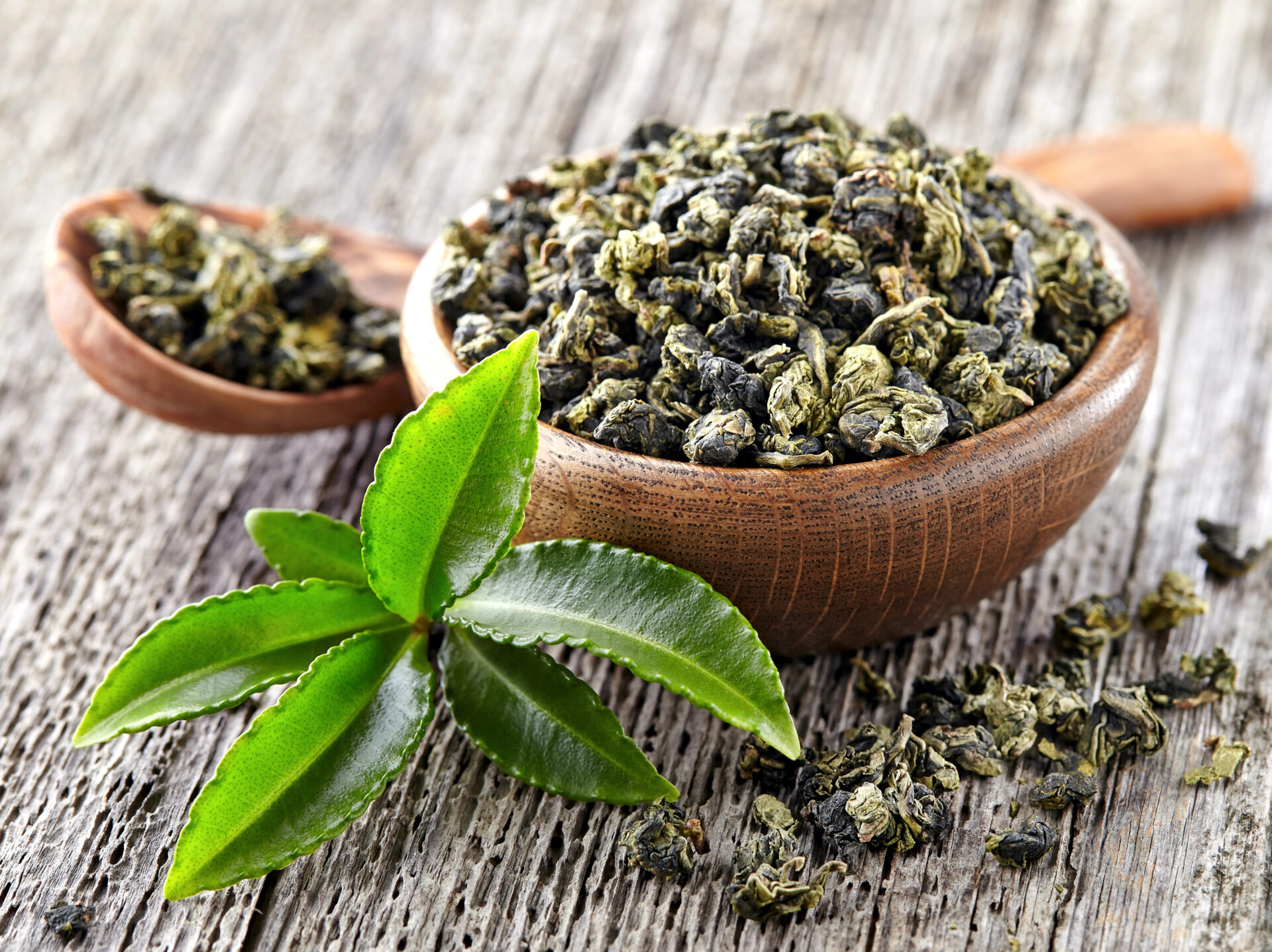Which Green Teas do not have PFAS “forever chemicals” inside the tea leaves? This is the question we attempted to answer when we sent the most popular green tea brands used inside our community to an EPA-certified laboratory to have the tea leaves tested for 40 PFAS analytes. You’ve trusted Mamavation to bring you consumer studies like safest olive oils tested for phthalates, safest coffee tested for PFAS, mycotoxins, & pesticides, safest water filters, & safest cookware, now join us for our latest study testing popular green teas for forty specific PFAS compounds.
Disclosure: This consumer study is released in partnership with Environmental Health News. Scientific reviews were performed by (1) Linda S. Birnbaum, Scientist Emeritus and Former Director of the National Institute of Environmental Health Sciences and National Toxicology Program & Scholar in Residence at Duke University, Adjunct Professor at the University of North Carolina, & Yale University, (2)Terrence Collins, Teresa Heinz Professor of Green Chemistry & Director of the Institute for Green Sciences at Carnegie Mellon University This post was medically reviewed by Sondra Strand, RN, BSN, PHN. Donations were provided by Environmental Health News and Mamavation community members. Note that Mamavation has only “spot-checked” the industry and thus we cannot make predictions about brands and products that we have not tested. Products and manufacturing aides can change without notice so buyer beware. This post contains affiliate links, with some to Amazon, which means Mamavation will receive a portion of those sales and we will use that to pay ourselves back for the testing. You can also give a tax-deductible donation to our consumer studies here through Environmental Health Sciences. Thank you! Copyright © 2025 Mamavation — All Rights Reserved

Table of Contents
Traces of PFAS “Forever Chemicals” Were Found in Half the Green Tea Leaves
Mamavation’s EPA-certified laboratory found per- and polyfluoroalkyl substances (PFAS “forever chemicals”) in 12 popular green tea leaves. These chemicals are linked to serious health effects, which we will discuss later. Because PFAS “forever chemicals” are so problematic to normal hormone action, Mamavation has commissioned our own scientific studies on PFAS in food products to make recommendations for the safest green teas. Continue reading Mamavation’s article on these products to find which brands have the safest green tea according to our laboratory.
For this consumer study, Mamavation sent 12 popular green teas from 12 brands to an EPA-certified laboratory looking for specific PFAS compounds. The tea leaves were tested for 40 PFAS chemicals. Because Mamavation only tested one product per brand, we cannot claim to know if these issues are, in fact, industry-wide or brand-wide. However, based on our “spot-check” of the industry, this is what we found:
- 50% of green tea leaves had detectable PFAS “forever chemicals,’ according to our lab. That’s 6 out of 12 green tea brands tested that had PFAS.
- 33% of green tea leaves had quantifiable levels of PFAS “forever chemicals” according to our lab. This means the levels of PFAS found were high enough to quantify. That’s 4 out of 12 green tea brands.
- The most common type of PFAS found by our lab was PFOA, Perfluorooctanoic acid.
- Ranges of PFOA: 0.103 ng/g to 0.397 ng/g. ng/g is parts per billion (ppb).
Linda S. Birnbaum, Scientist Emeritus and Former Director of the National Institute of Environmental Health Sciences and National Toxicology Program & Scholar in Residence at Duke University, Adjunct Professor at the University of North Carolina, & Yale University had this to say: “It’s disappointing to find PFAS inside Green Tea. This relaxing tea is used by billions of people around the world, and exposure to these hormone-disrupting chemicals is problematic for human health.”
PFAS “Forever Chemicals” Have Problematic Health Effects
PFAS “forever chemicals” are problematic for human health and the environment. They are considered ubiquitous, persistent, and toxic. Therefore, reducing the amount of PFAS you are exposed to from food, water, and other beverages like tea is imperative. Mamavation is dedicated to helping you do that when shopping for tea.
Here are some of the adverse health effects of different PFAS “forever chemicals:”
- Reduction in immunity
- Reduced vaccination response
- Increased risk of allergies & asthma in young children
- Affected growth, learning, and behavior of infants and older children
- Increases cholesterol levels
- Metabolic diseases like obesity & diabetes
- Cardiovascular disease
- Lowered a woman’s chance of getting pregnant
- Lowered male fertility
- Increased risk of kidney & testicular cancers
- Causes endocrine disruption
- Disrupted normal thyroid function
- Increases risk of acute lymphoblastic leukemia in children
It’s also very clear, based on biomonitoring evidence from the Centers for Disease Control & Prevention (CDC), that PFAS are in all Americans. Therefore, these exposures can harm most Americans.
Specific PFAS Found by Mamavation’s Laboratory
Mamavation’s laboratory found 6 PFAS chemicals within all the green tea leaves sent to the lab. Although we were not able to get specific details of where each brand’s sourcing farms were located, most of the geographic regions sourced from based on marketing materials and customer service inquiries, were in China, Japan, & Vietnam. These chemicals are listed as the most commonly found in our study. The chemical found most often was PFOA, which was found in 3 products.
- PFOA: Perfluorooctanoic acid (PFOA) is the most well-studied PFAS chemical with a wide variety of adverse health effects in both animals and people. This chemical has been classified as carcinogenic to humans by WHO’s International Agency for Research on Cancer (IARC)and the US EPA. Many PFAS, such as PFOA, do not break down in the environment via natural processes and are commonly referred to as “forever chemicals” because of their status as a persistent organic pollutant (POP). PFOA is known to move through the environment and contaminate drinking water and soil as it bioaccumulates. Residues have been consistently found throughout the world in wildlife, humans, and the environment. PFOA is also very persistent in people.
- PFPeA: Perfluoropentanoic acid (PFPeA) is a lesser-known PFAS compound most notably found in firefighting foams, industrial surfactants, stain-resistant coatings for textiles, carpets, and furniture. PFPeA is an example of “short-chain” PFAS compounds which were created to replace “long-chain” PFAS, such as PFOA and PFOS. Although PFPeA has not been studied intensively, such “short-chain” PFAS chemicals are also very persistent in the environment and can get into places where they were not expected to be found. In animal studies, this chemical has also been linked to liver problems, inflammatory responses, and immune issues. North Carolina is the state where this chemical is most often found in the water supply. This chemical is part of a family of perfluoroalkyl carboxylates, which is similar in structure to PFOA but with a carbon chain length of only 5 carbons. PFPeA can also be found in the body due to dermal contact.
- PFHpA: Perfluoroheptanoic acid (PFHpA), which has 7 carbon atoms, is considered a short-chain PFAS chemical. These perfluoroalkyl carboxylic acids and their salts are used as surfactants that reduce the surface tension of water and other organic liquids. These acids and derivatives are used as wetting, dispersing, emulsifying, and foaming agents in commerce. Health effects include harm to development and the liver.
- PFBA: Perfluorobutanoic acid (PFBA) is a breakdown chemical of other PFAS used in stain-resistant fabrics, paper food packaging, and carpets. PFBA was also used for manufacturing photographic film. 3M Company was once a major manufacturer of PFBA and products containing PFBA, but their production was phased out in 1998. PFBA continues to be produced by multiple companies in the US and other parts of the world. Exposure to high levels of PFBA resulted in thyroid and liver effects, such as increased thyroid, changes in thyroid hormones, and decreased cholesterol in animal studies. Many PFAS do not break down in the environment via natural processes and are commonly referred to as “forever chemicals” because of their status as a persistent organic pollutant (POP). PFBA is known to move through the environment and contaminate drinking water and soil as it bioaccumulates. Residues have been consistently found worldwide in wildlife, humans, and the environment.
- 6:2FTS: 6:2-Fluorotelomersulfonic acid (6:2FTS) is a replacement chemical for perfluorooctanesulfonic acid (PFOS) used in fire-fighting foams and chromium plating. Although 6:2FTS has not been studied intensively, such “short-chain” PFAS chemicals have already become very persistent in the environment and can get into places where they were not expected to be found.
- ADONA: 4,8-dioxa-3H-perfluorononanoate (ADONA) was an early alternative to PFOA, used in the production of fluoropolymers since 2008, but studies have proved this chemical is also problematic to human health, just like the other substitutions were.
Recent Studies on PFAS in Teas Have Demonstrated Widespread Contamination
The past five years have seen a flurry of studies looking at specific PFAS compounds and certain foods and beverages like tea. One study claimed that people who drank more tea were more likely to have higher levels of PFAS in their blood. Here are some recent examples of studies done on teas:
- In a study published in 2023, tea bags coming from India were found to contain PFOS, PFHxS, and PFNA present in the tea bag powder and tea bag material.
- In a study published in 2022, bubble tea was found to contain certain PFAS compounds at concerning levels.
- In a Japanese study published in 2021, PFAS was found in Japanese teas, among other products like bottled water and juice.
- Another study in 2021 found specific PFAS compounds in beer and tea.
- A study in 2020 found that coffee/tea was associated with higher plasma concentrations of specific PFAS as well.
Because tea is an everyday product used by millions of families in the United States, Mamavation wanted to establish which green tea brands would be considered the “safest” in terms of PFAS. We’ve also done some additional testing of other teas:
- Mamavation found detectable PFAS in 91% of the Earl Grey Teas sampled.
- Mamavation found detectable PFAS in 54% of Chamomile Teas sampled.
Terrence Collins, Teresa Heinz Professor of Green Chemistry & Director of the Institute for Green Sciences at Carnegie Mellon University had this to say about the study: “This study looks at an important question for green tea drinkers. Are ‘forever chemicals’, PFAS compounds that the human body cannot break down and tends to hold on to, in the product contaminant profile? The results speak for themselves. No one wants to be ingesting PFAS when they drink green tea! It’s somewhat comforting that PFAS contamination is not universal, at least in Mamavation’s spot-testing. Green tea drinkers are now armed with the knowledge to send messages of approval or disapproval through their buying habits across the green tea business world.”
Product Brands We Tested
To help our community make safer choices, Mamavation sent a variety of green tea products—including loose-leaf teas, matcha powders, and tea sachets—to our EPA-certified laboratory for PFAS testing using both EPA 1633 (40 analytes) and total fluorine marker testing.
Below is the complete list of green tea brands included in our investigation.
Green Tea Brands Tested by Mamavation
Pique Sun Goddess Matcha Green Tea
The Republic of Tea The People’s Green Tea
Traditional Medicinals Organic Green Tea with Toasted Rice Matcha
Yogi Green Tea Pure Green
Bigelow Green Tea Certified Organic
Twinings Green Tea Jasmine
From Great Origins (FGO) Organic Green Tea Bags
Harney & Sons Nourishing Green Tea Japanese Sencha
Numi Organic Green Tea Gunpowder Green
Pukka Supreme Matcha Green
Rishi Jasmine Organic Scented Green Tea Sencha
TAZO Organic Zen Regenerative Green Tea
Want full access to the raw data, PFAS levels, and our recommendations for the safest green tea products? Join our newsletter to unlock the complete buying guide with detailed lab results for every brand.






 The Best Non Toxic Toasters & Toaster Ovens Of 2025 (A Guidebook)
The Best Non Toxic Toasters & Toaster Ovens Of 2025 (A Guidebook)
keep in mind that some of the teas recommended here will have microplastic emissions, from the tea bag, etc (including TAZO).
There are so many different kinds of green tea, from Japan to China and more. This was a very small test sample.
I really appreciate this research because I drink green tea daily and worry about safety. Which brands did you personally find most trustworthy?
Im Astonished to see PIQUE TEAS??? like what? Has anyone heard from them about this?
This is exactly the kind of article we all need. The reminders are straightforward and have the potential to enhance our productivity and well – being.
Can you please test teas for flouride.
It’s your day—why not treat yourself to something that makes you feel good
I was also wondering about the teabags, themselves.
What about Davidson’s Orgainics? Gunpowder Green.
But the Better and Best teas listed aren’t tested for Lead or Mold – I just checked!! So it seems to be a matter of “pick your poison!”
Are there any websites offering results for mold.and lead testing?
Why is this allowed to happen
We have fda usda allowing toxins in everything we eat and drink n they r so called the EXPERTS. I hope the non expert cleans this up as well!!
I agree. Consumer Lab checks for lead and mold and a lot of the ones that don’t have PFAS in them have lead in them. I wish you would get together with them and test for everything.
Really appreciate your work. Would love to know if these tests include the tea bags, and if so, could you also test some publicly available bulk teas? Thrive market has an organic one in bulk. Thank you.
Really wish you would also test for heavy metals, as Lead is a major problem in teas particularly from China.
Hey Ace & Akimon! Gardenika just replied to my inquiry …”Our teas are free of mold & heavy metals”. So we’ll have to either trust that or not!
What about plastics in the tea bags, but also, what about heavy metals..?
Hey Ace & Akimon! Gardenika just replied to my inquiry …”Our teas are free of mold & heavy metals”. So we’ll have to either trust that or not!
Did you request the laboratory analysis report that tested specifically for those contaminants and shows that they are indeed free of contamination?
What about the tea bags though? The best category is all tea in tea bags and wondering if you guys tested that as well as I want to buy the non detect ones but you don’t say the bags are safe
What about the microplastics in the bags? Does ANY tea brand also have safe bags? If you have already addressed this, my apologies.
Exactly. You don’t want to have PFAS-free tea leaves but microplastic-riddled tea bags. I contacted Traditional Medicinals in 2023 about their organic green tea I was drinking (not the Matcha one on the ‘Not Our Favorite’ list above, albeit one that could possibly contain PFAS) and they said: “Please be assured that we go to great lengths to ensure the quality of our product, and we strive to minimize our footprint by managing and measuring our environmental impact. We’re proud to say our paper tea bags are fully compostable, non-heat sealed, and do not contain any plastics. Our Non-GMO tea bags are made from wood pulp and sustainably harvested abacá (Musa textilis), also sometimes known as manila hemp, even though it is actually a species of banana.”
Karen I was wondering the same thing as all the articles coming out are talking about it, especially Mark Hyman MD
Thank you so very much for all the hard work you put into all the great information you provide to us!!! I so appreciate what you are doing to help keep us all healthy!!! Loren
how about uji tea leaves?
What about Clipper tea?
I second this request. Please test the tea and teabag (or just strong brewed tea made with their teabag) for Clipper organic English Breakfast black tea. It is one of the only organic black teas available to me. Please test it for PFAS, heavy metals, and mold. Thank you very much.
Yes, Clipper and any decaf varieties. Mamavation doesn’t seem to ever test decaf coffee or tea. A lot of health conscious people especially those with insomnia drink decaf and would appreciate some tests of decaf brands. Thank you!
The decaf process is worse chemicals than PFAS.
Are any of the best tested green teas available in decaffeinated?